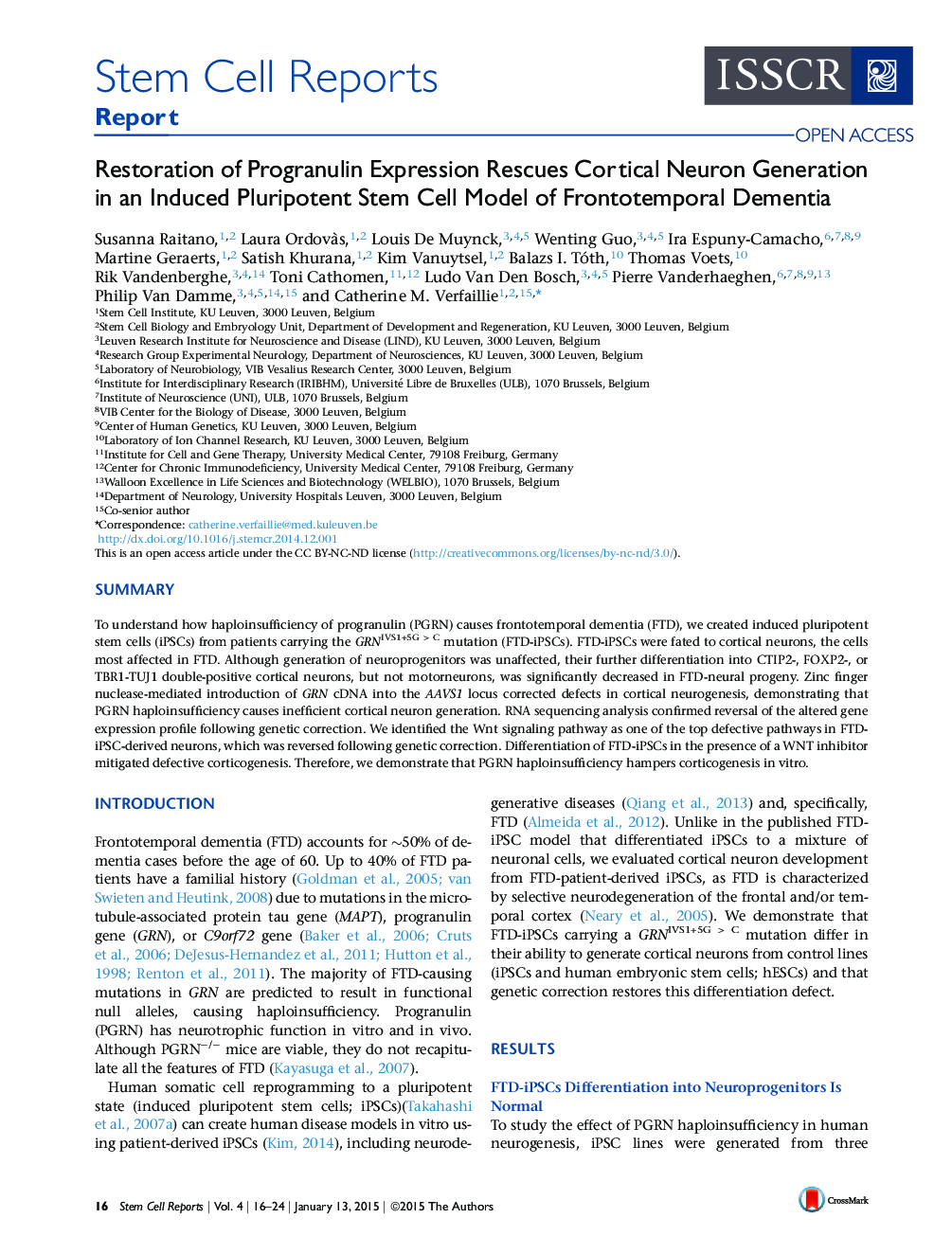| Article ID | Journal | Published Year | Pages | File Type |
|---|---|---|---|---|
| 2093642 | Stem Cell Reports | 2015 | 9 Pages |
•In vitro generation of cortical neurons from PGRN deficient FTD-iPSC is inefficient•Incorporation of GRN cDNA via ZFN technology rescues cortical neurons generation•WNT signaling may also play a major role in the defects observed
SummaryTo understand how haploinsufficiency of progranulin (PGRN) causes frontotemporal dementia (FTD), we created induced pluripotent stem cells (iPSCs) from patients carrying the GRNIVS1+5G > C mutation (FTD-iPSCs). FTD-iPSCs were fated to cortical neurons, the cells most affected in FTD. Although generation of neuroprogenitors was unaffected, their further differentiation into CTIP2-, FOXP2-, or TBR1-TUJ1 double-positive cortical neurons, but not motorneurons, was significantly decreased in FTD-neural progeny. Zinc finger nuclease-mediated introduction of GRN cDNA into the AAVS1 locus corrected defects in cortical neurogenesis, demonstrating that PGRN haploinsufficiency causes inefficient cortical neuron generation. RNA sequencing analysis confirmed reversal of the altered gene expression profile following genetic correction. We identified the Wnt signaling pathway as one of the top defective pathways in FTD-iPSC-derived neurons, which was reversed following genetic correction. Differentiation of FTD-iPSCs in the presence of a WNT inhibitor mitigated defective corticogenesis. Therefore, we demonstrate that PGRN haploinsufficiency hampers corticogenesis in vitro.
Graphical AbstractFigure optionsDownload full-size imageDownload as PowerPoint slide
